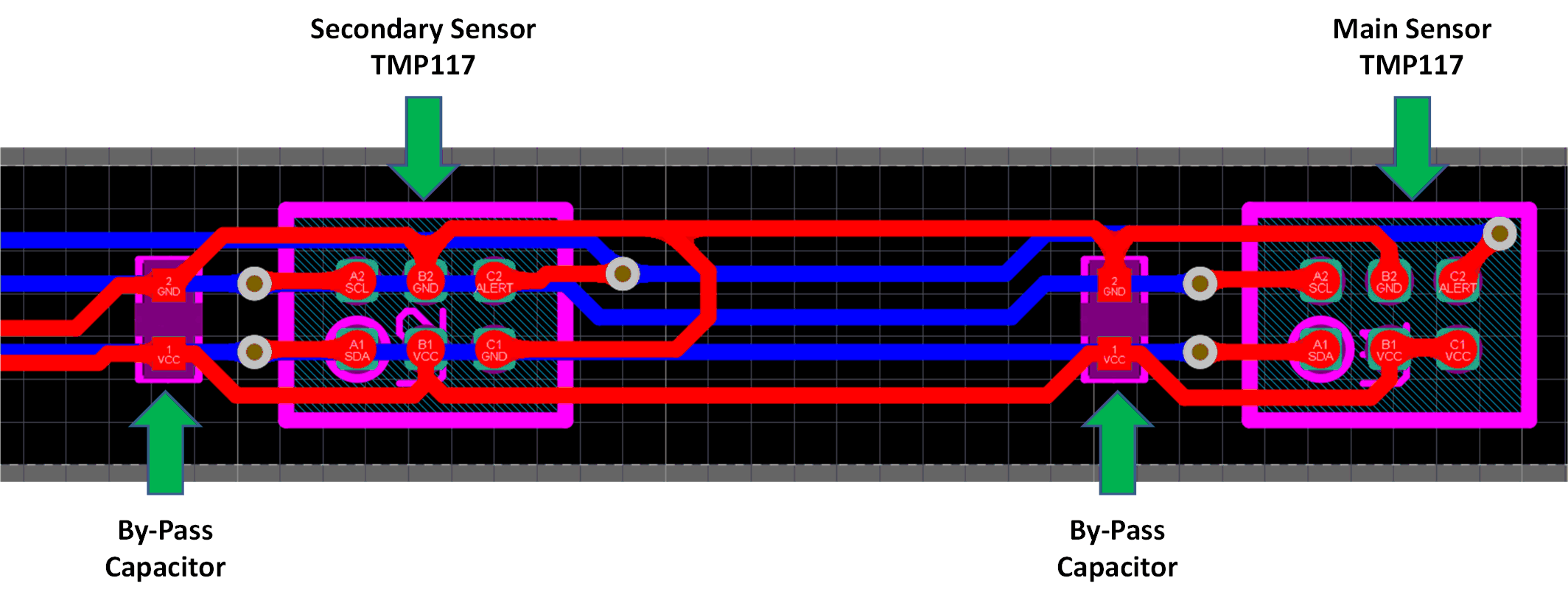TIDUEX1A December 2020 – March 2021
4.2.1 PCB Layout Recommendations
The Hearables Body Temperature Monitor Flex PCB Strip was designed with a thin 2-layer flex PCB with a minimalistic profile. This is to allow for easy integration into small hearable devices as well as to have a fast thermal response time. For general recommendations for flex PCB designs, designers should consult with the flex board manufacturer. It is important that this aspect be considered to minimize potential damage to the board traces. While this design does not integrate any stiffener to maximize flexibility, a stiffener should be used on portions that are not intended to bend. The routing of the TMP117 devices was intended to keep the minimal width of the flex board while still being able to access all functions of the device. Small 01005 size decoupling capacitors were also used to keep the minimal profile. Figure 4-1 shows the routing of the TMP117 devices on the flex board.
 Figure 4-1 TMP117 Layout
Figure 4-1 TMP117 Layout